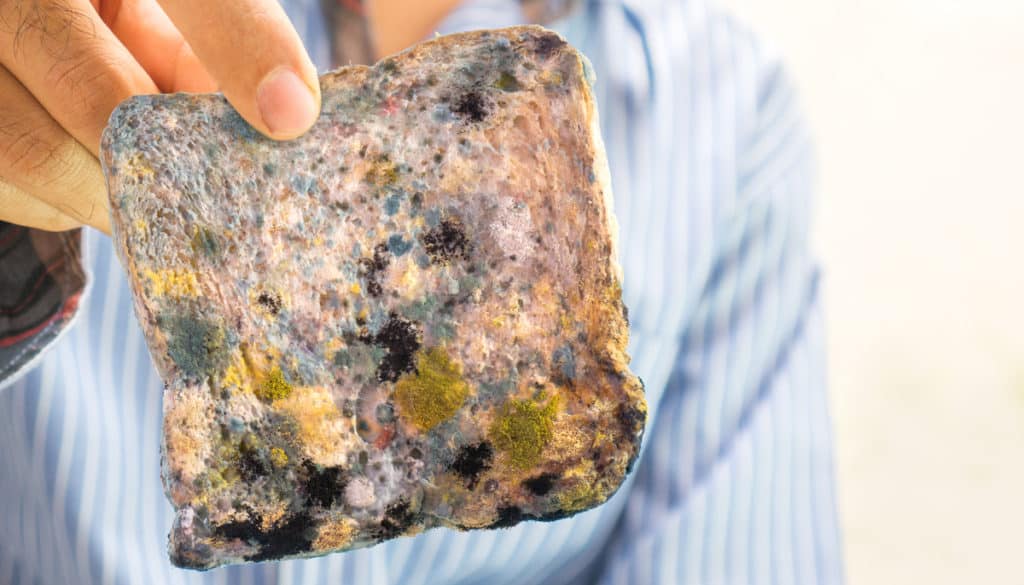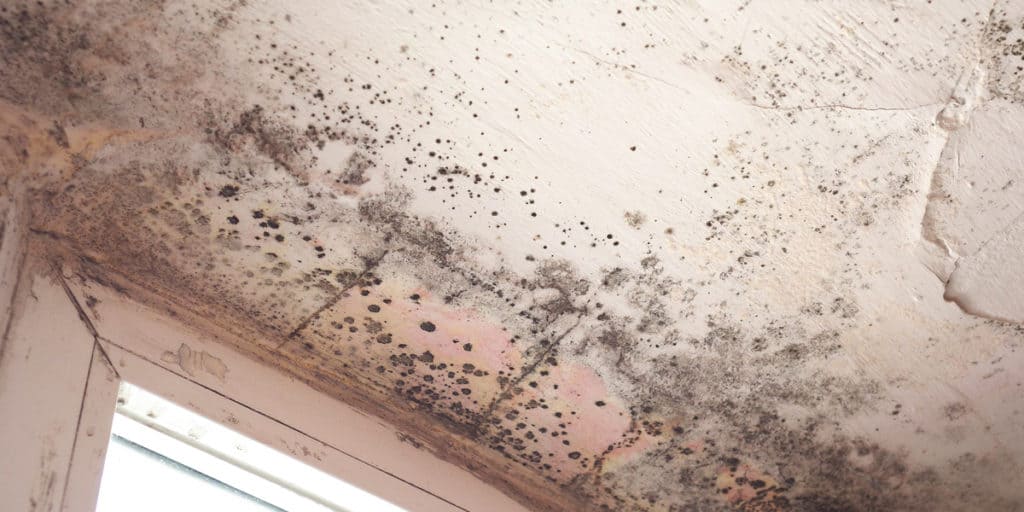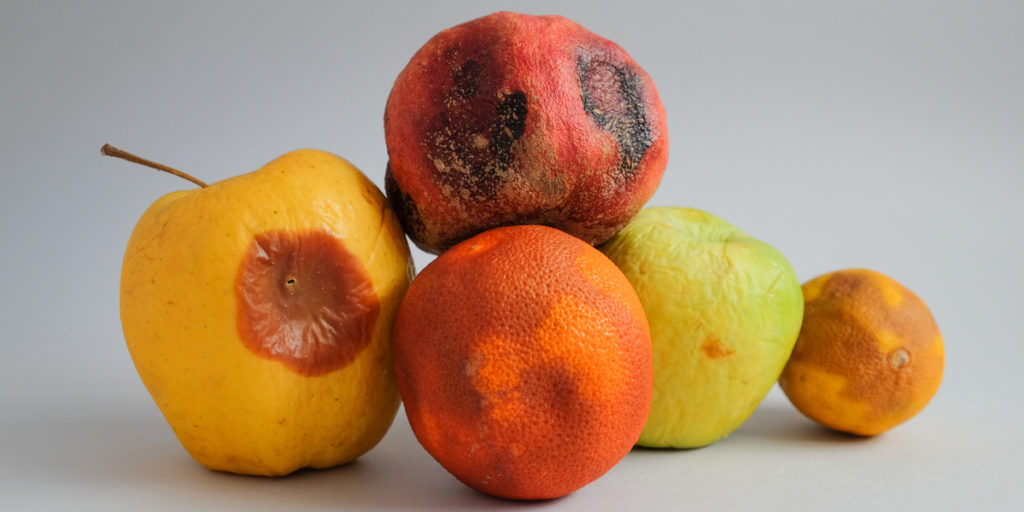If you want to know or if you are uncertain whether or not mold can make you sick, this is the right blog for you. Well, to take your mind off that curiosity, the answer is yes. Mold is a fungus, it grows everywhere and it could make you sick.
Ever noticed those slimy or fuzzy-looking, irregularly-shaped black, green, grey or white spots lurking on the walls of your home, particularly your bathroom or toilet, in the backyard and even on your bread that has been kept for some time? That is mold. It grows wherever you or your family spend time in. Once exposed or inhaled, your body reacts by making antibodies to quickly eliminate the toxins.

Your body may have certain reactions to mold toxins through symptoms such as sneezing, coughing, headaches, dry or watery eyes and skin irritations. You may already have a sensitivity to mold, but for others, prolonged exposure in a moldy area of the house or a building can cause certain health hazards.
To avoid any future undesired circumstances that could have a huge impact on your health, I will be explaining important things not just about mold but as well as yeast infections, Candida and their corresponding danger to your health.
What You Don’t Know About Unwanted Mold
The first thing you might not know about mold yet is that it has a variety of types, and each of them can either have no effect or a serious concern to your health.
Molds are very common, you will notice them in your home or in buildings. They form or reproduce through tiny spores, most especially when there is moisture and high humidity levels.
The molds send out spores that contain powerful biotoxins that are nerve toxins or neurotoxins.
When these spores with their neurotoxins are inhaled, about 75% of the population can make antibodies to the toxins and quickly eliminate them.
You may sneeze, have a sore throat or have other minor symptoms, but symptoms are temporary. If you spend several days in a moldy building, you may begin to feel sick, but when away for a few days, you’d recover.
About 25% of the population have a genetic makeup that makes them unable to produce the needed antibodies for mold toxins.
The body simply does not adequately tag the toxins as invaders and it does not eliminate them. The liver can send them to the digestive tract via the bile, but they are quickly reabsorbed back into the blood. The result is that continual or repeated exposures to mold toxins result in an ever-increasing amount of these toxins in the body. Those who can actually smell musty odors where they live or work usually have the worst mold toxin problems.
Common Mold Around You
Mold toxins are found in foods such as grains and peanuts. Far more serious are the mold toxins found in buildings with water leaks. Buildings with flat roofs and buildings on a concrete slab at the bottom of a hill are ready-made for mold problems.

When a building has a water leak or water damage that is not immediately corrected, molds such as Stachybotrys, Aspergillus, Acremonium, Actinomycetes, Penicillium and Chaetomium are likely to start colonies. The colonies may be visible or they may be hidden in places such as the tops of ceiling tiles or the bottoms of carpets.
Note: Aflatoxin – is a highly dangerous toxin produced by mold that is often found in improperly stored peanuts and peanut butter. The toxin can produce swelling, especially in the legs and abdomen, and damage the liver.
Molds that surround you
Let’s quickly have a look at some of the most common molds you may encounter around you:
| Aspergillus flavus | found on corn, peanuts and grain, which produces aflatoxin. |
| Aspergillus glaucus | blue mold occurring in some human infectious processes. Commonly isolated from soil, plant debris, and indoor air environment. |
| Aspergillus niger (black mold) | common mold that may produce severe and persistent infection. Found in soil, dust and decaying vegetable matter and on bread. |
| Aspergillus rhizopus | may also produce severe and persistent infection. Found on mature fruits and vegetables, jellies, syrups, bread, peanuts, leather and tobacco. Produces mycotoxin rhizonin. |
| Aspergillus terreus | mold occasionally associated with infection of bronchi and lungs. Found on soil, compost, dust. |
| Penicillium chrysogenum | commonly found in mattresses and carpets. It can cause pulmonary inflammation and asthma. When exposed to it for a longer time it can lead to chronic sinusitis. |
| Acremonium | it is carcinogenic so it can impair brain function. Found in household systems and areas such as condensation from humidifiers, cooling coils, |
| Stachybotrys Chartarum (Black mold) | Commonly found on wallpapers. Also on paper, cardboard, wallboard, wall framing when persistently wet. Linked to sick building syndrome. |
| Chaetomium | has a cotton-like texture and usually changes colors from white to grey to brown and eventually to black over time. Usually found in a damp or leaking roof, basement or sink and may be recognizable by its musty odor. |
Those common molds included in the list above are just some of the ones you have to know for you to at least be aware of your surroundings. Let’s move forward and discuss how it actually multiplies.
How Fungus Proliferates
It was mentioned earlier that mold is a fungus, and now for a broader perspective, I will tell you how it actually reproduce around you. One well known fungus that does not harm (as long as it is edible) people is mushroom. Although some are safe to eat, others, like the wild ones are poisonous.
The word “fungus” is a broad classification that includes mildew, molds, rust, smut and yeasts, as well as mushrooms, morels, puffballs and truffles.

Let me go over and share which type or group of fungus is/are useful or harmful to you. Fungi feed in three ways.
1st Group. They grow on dead organic matter (leaves, trees, manure, insects, animals). Usually, this group eliminates what is being eaten.
Rotting – it is when the enzymes digest the cellulose and lignin in the organic matter.
2nd Group. Members of this group are parasitic: they live within or upon another organism without killing it, at the expense of the organism. They attack and kill living hosts, which causes serious damage.
3rd Group. They are a relatively small and beneficial feeding group. The members form a symbiotic partnership with plants (mainly trees), whereby the tree supplies them with moisture and carbohydrates, and the fungi release minerals and other nutrients into the surrounding soil.
Fungi reproduce by releasing spores that are carried elsewhere — either via the wind if they are outdoors, or via the bloodstream if they are living in someone’s body.
Fungi and their highly poisonous mycotoxins are implicated in an almost unlimited number of diseases.
According to research from Dr A.V. Costantini, Mark Bielski, Italian oncologist Tullio Simoncini
Diseases you have to watch out for
- adrenal disorders
- atherosclerosis
- cancer
- Liver Cirrhosis
- Cushing’s disease
- gout
- hypoglycemia
- kidney stones
- osteoarthritis
- rheumatoid arthritis
- muscular dystrophy
- skin disorders (including psoriasis and scleroderma)
- AIDS, Alzheimer’s
- brain inflammation
- Chronic Fatigue Syndrome
- Crohn’s disease
- diabetes
- circulatory problems
- infertility and reproductive organ disorders
- osteoporosis
If you have noticed, “mycotoxins” was mentioned which is associated with fungus. But what are mycotoxins?
The Danger of Mycotoxins
First, to break it down to you, here’s what mycotoxin is:
The myco in the word mycotoxin is from the Greek “mykes,” which means “fungus”.
Fungi feed on unhealthy and fermented body tissue which causes it to excrete unhealthy (mostly acidic) waste materials. It is these microbial waste materials, mycotoxins, that further contribute to a rising spiral of sickness.
In addition, the term “mycotoxins” also applies to the waste material of pathogenic corpses that shatter in the body, a waste commonly known as die-off. Ideally, a white blood immune cell will attack, immobilize and devour a pathogen whole—thereby transmuting it—before the microbe has a chance to shatter and spew its toxic waste into the bloodstream.

Mycotoxins and how they can affect you
Take a look at the list of mycotoxins and their accompanying health risks or where they are commonly found below:
1. Aflatoxins. Symptoms include anorexia, lethargy, muscle weakness, liver problems (haemorrhages, necrosis, and cancer) and engorged kidneys.
2. Alternariol. A toxic metabolite of the Alternaria fungi. Naturally occurs on fruits, vegetables, and cereals, such as apples, tomatoes, and wheat. Inhibited by light, highly toxic, and maybe mutagenic.
3. Brevianamide. It causes an inflammatory response in lung cells.
4. Citrinin. This occurs mainly in stored grains, but also in other plant products such as beans, fruits, fruit and vegetable juices, herbs and spices, and also spoiled dairy products; the cause of the yellow rice disease in Japan.
5. Gliotoxin. Possesses immunosuppressive properties; may be implicated in Autism.
6. Ochratoxin A. Found as a contaminant of a wide range of commodities including beer, wine, grains and cereal products, dried vine fruit, coffee, grape juice, processed cereal-based foods, and baby foods. It may be a human carcinogen and also kidney disorders.
7. Patulin. Associated with a range of mouldy fruits and vegetables, in particular rotting apples (but not in cider) and figs.
8. Satratoxin. Found in water-damaged houses; toxic to humans and animals. Possible symptoms are a rash that becomes moist dermatitis, nosebleeds, chest pain, pulmonary haemorrhage, hyperthermia (raised temperature), headaches and fatigue.
9. Sterigmatocystin. Found in water-damaged buildings and some food. Helicobacter pylori facilitates Sterigmatocystin-induced gastric cancer. Highly toxic and carcinogenic.
10. Trichothecene. Infects the grain of developing cereals such as wheat and maize. Reduces immune response.

Toxins are bad for the body. Knowing at least several of them and doing necessary actions could help to avoid any of their negative impact on your health.
Moving on, let’s tackle the link between yeast and alcohol, which you may be fond of drinking.
How Your Alcohol is Made
For some, drinking is a way to relieve stress and to have fun since it gives that feeling where worries are temporarily forgotten. But have you ever wondered how alcohol is made and how it gives that certain effect on your behavior? Well, let me go ahead and share it with you.
Alcohol is technically the waste product of certain types of yeast that feed on fruit and grain sugars. Fruit-based alcoholic beverages produce wine and brandies, and grain-based alcoholic beverages produce beer and hard liquors such as vodka. What the yeast is fed, and the type of yeast used to create the drink, determines the type of beverage that’s created.

When people become intoxicated from alcohol, they are experiencing the destruction and death of brain cells. It is the decreased transmission of electrical impulses in the brain, due to cell death, that provides the “high”. Note the word toxic in intoxicated. This is an accurate description, because alcohol poisons the liver and clogs the lymphatic vessels with waste.
Aside from that, you may also feel sleepy whenever drunk or intoxicated, it’s the same thing when the high carbohydrate and sugars get fermented in the presence of yeast, alcohol is produced. Ethanol can become ethyl alcohol in the presence of oxygen. It will put you to sleep. Some people fall asleep after they eat a high refined carbohydrate diet, because it increases the activity of yeast. Refined sugar and starch stimulate yeast and candida growth.
When you get a lot of yeast overgrowth, it is a warning sign that the body is struggling with poor energy circulation; the body is decaying. Then how is yeast connected with Candida?
Connection of Yeast with Candida
Many people with fungal problems have an overgrowth in their digestive tract. Some yeast ordinarily lives in the digestive tract, but due to poor diet, stress and antibiotics, it proliferates and crowds out beneficial bacteria. Fungal overgrowth causes a vast array of conditions, including poor digestion and susceptibility to diarrhea and/constipation.
Although most people call their systemic or digestive fungal infection “Candida” (short for the Latin Candida albicans), there are actually many different kinds of fungal forms, which manifest differently in the body.
Remember that the presence of fungi indicates an advanced stage of fermentation within the body — the organism is literally molding— so you will need to pay careful attention to diet and acid/alkaline balance (pH).
Digestive Fungal Infestation: Candida
Candida overgrowth causes a vast array of conditions including but not limited to: poor digestion, mood swings, overweight, craving for carbohydrates (including sweets and alcohol), depression, blurry vision, slurred speech, poor motor coordination, and an inability to focus or remember.
Normally, when Candida yeast live in the digestive tract, the acidophilus and bifidus lactobacilli prevent the Candida from multiplying. But poor diet, stress, and antibiotics (which kill the friendly flora) alter the intestinal terrain. This not only encourages the Candida to proliferate, but it also allows the relatively benign, less sophisticated yeast form to bloom into a dangerous, full-blown fungus whose fruiting bodies produce long branches or stalks that puncture the lining of the gut.

Such extensive damage causes leaky gut syndrome, during which partially digested food escapes that intestinal wall, where it then poisons the bloodstream and inflames the tissues.
Moreover, a waste product of Candida—acetaldehyde, which is chemically related to formaldehyde (a fluid used to embalm corpses)—interferes with the body’s neurotransmitter pathways, metabolism, immune response, and nervous and endocrine systems.
The tendency of acetaldehyde to accumulate in the brain, spinal cord, joints, and muscles is what poisons the bodily tissues and creates such a wide variety of debilitating symptoms.
Conclusion
Prolonged exposure to mold can make you sick, especially if you already have a sensitivity to it. So to keep an eye on the symptoms you may be suffering from, may help for a health problem not to progress. Bear in mind that sneezing, coughing, having skin issues are just some of the symptoms that manifest when you have mold sensitivity.
In addition to that, since mold is a type of fungus, then it’s also something you have to watch out for, in general. Along with it is yeast, that is present in food, in your body, and your surroundings. You may check if there is a presence of Candida in your body by simply doing the Candida Spit Test at home.
Get Rid of Your Mold Sensitivity
Molds and fungi are in a category by themselves, because of the numerous ways they are contacted as allergens in everyday life. They can be ingested, inhaled, touched, or even (as with penicillin) injected. Basically, they can grow everywhere so it is not something you can easily avoid.

With our non-medical and non-invasive methods, we get to the root cause of your sensitivity to mold and fungi to put an end to symptoms you may be having. We desensitize your body to specific allergens/sensitivities which will then help your body to heal from within.
Connect with us through our Facebook page at www.facebook.com/NAETDubai or visit: www.naetdubai.com. You will find a wealth of information here along with an opportunity to speak confidentially through WhatsApp 056-639 0197 or Phone Call 04-420 1633.
You may also email us at admin@naetdubai.com



